In the year 2006, I took my parents for a short trip around Serbia and thus we came to Niš, the third largest city in Serbia. The first place we headed to was the memorial centre that incorporates a former concentration camp from WWII.
While an old “motorway” used to go along the streets of Niš back in the day and we used to go to the town of Leskovac in order to see the family, we regularly passed by this former concentration camp and my mom often told us about her memories linked to the camp. Namely, during WWII, my grandmother, through whose home on the outskirts of Leskovac partisans used to pass on their way to fight the occupiers, was arrested and brought to this camp. As for my grandfather, he had left my grandmother and their two daughters already before WWII and as it turned out spent the war years until 1943 in Belgrade working for the “enemies of the people” and that grandfather constitutes quite a different, very picturesque topic from the history of my family, but in fact has no direct links to the visit of this camp. The point is that my mom and my aunt, as two little girls, aged around 9 and 12, respectively, lived quite alone in Leskovac, while their mother was in the camp in Niš.
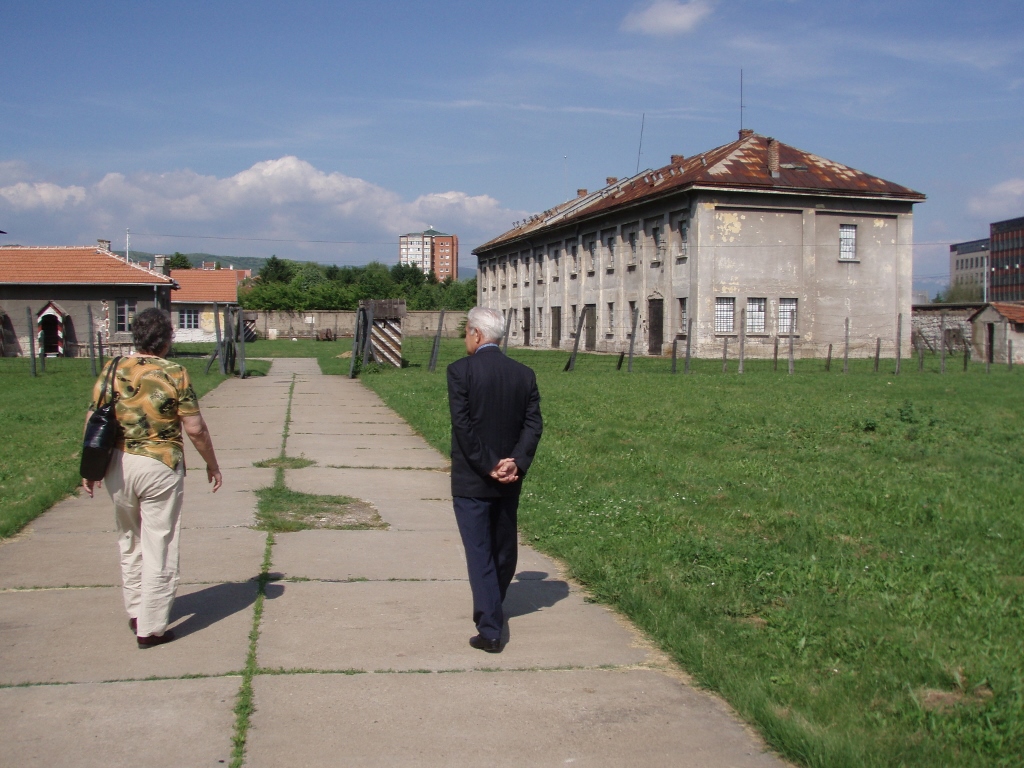 At the WWII concentration camp
At the WWII concentration camp
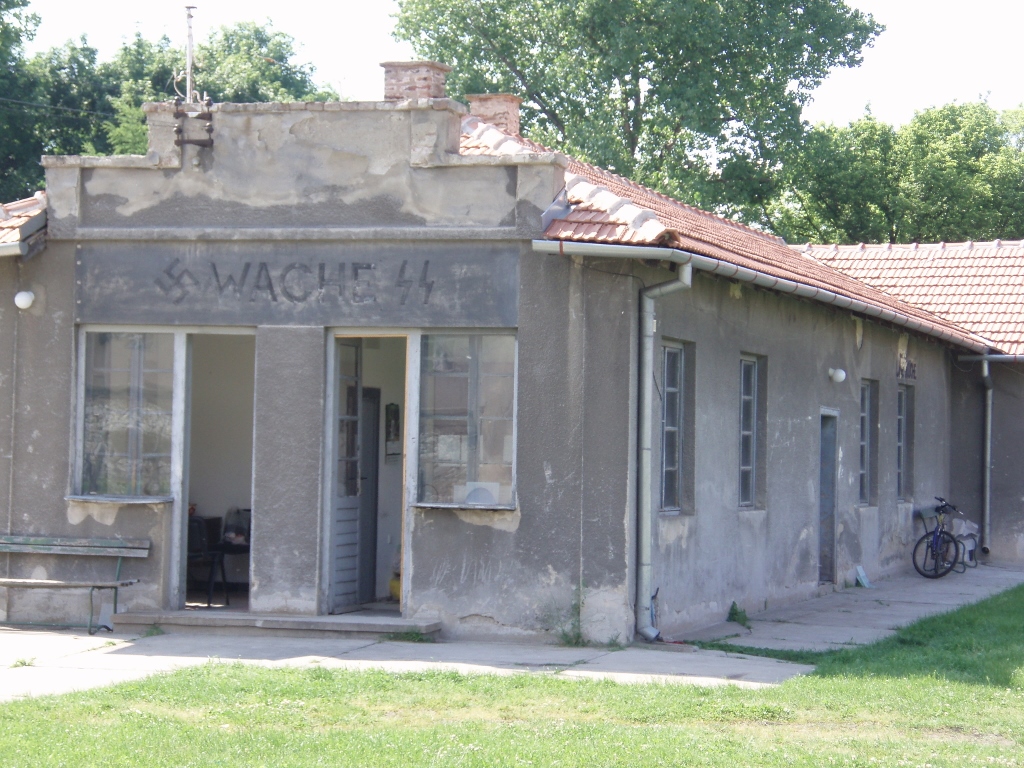 At the WWII concentration camp
At the WWII concentration camp
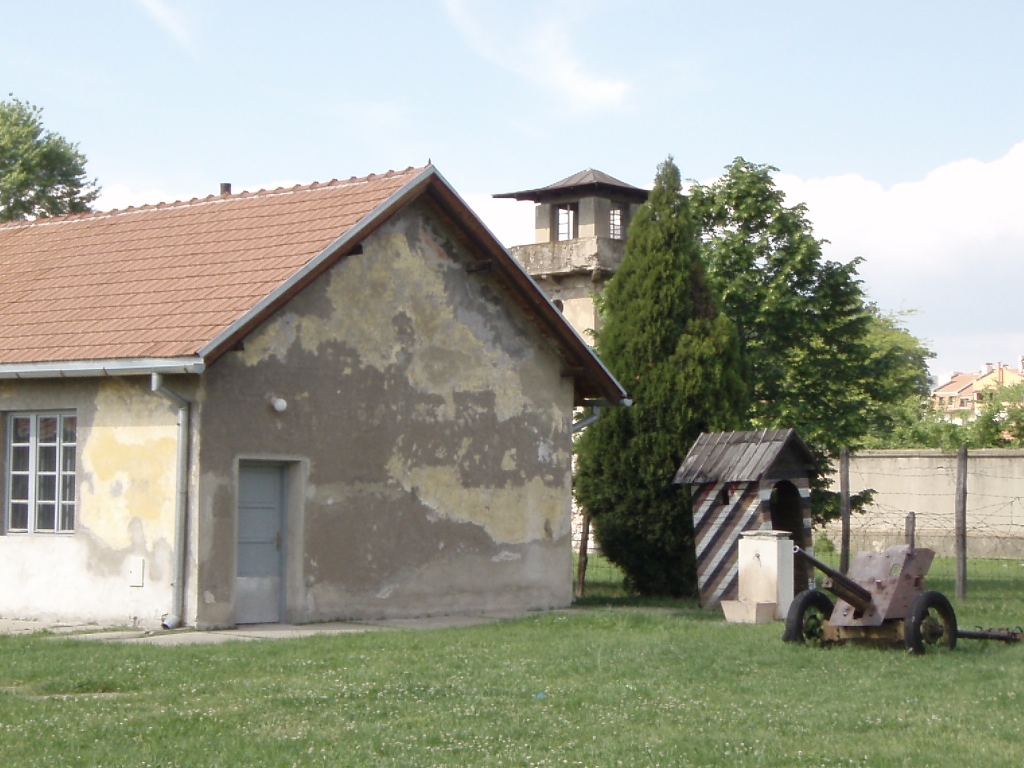 At the WWII concentration camp
At the WWII concentration camp
To start with, since the house in which they lived in Leskovac was directly across the road from the entrance into the barracks compound used by the Bulgarian army (which had occupied south Serbia) and some commander there took pity of my mom and aunt for “not having parents,” the two of them were allowed to come with pots and get portions of the same food distributed to the Bulgarian soldiers. Also, after members of the resistance taught them how to approach the situation, the two of them came to Niš and at the entrance into the concentration camp they started to cry and whine to the guards saying their mother was inside, their father did not want them and the two of them had nowhere to go, so they asked to be let inside to be with their mom. It sounds almost incredible that the guards indeed let them get in so that my grandmother could bathe them, but they were also told that if the Gestapo came they would have to hide them any way they knew. And thus, my mom and aunt entered the camp and my grandmother could indeed give them a bath and be with them for a little while. As it happened, some members of the Gestapo did come there at some point, so the prisoners put my mom and aunt to lie down along the angle created by the wall and the floor, most strictly told them not to make any sound, then they threw some straw over the two of them and they themselves lay down on such “bed,” since they slept on the floor over the straw anyway.
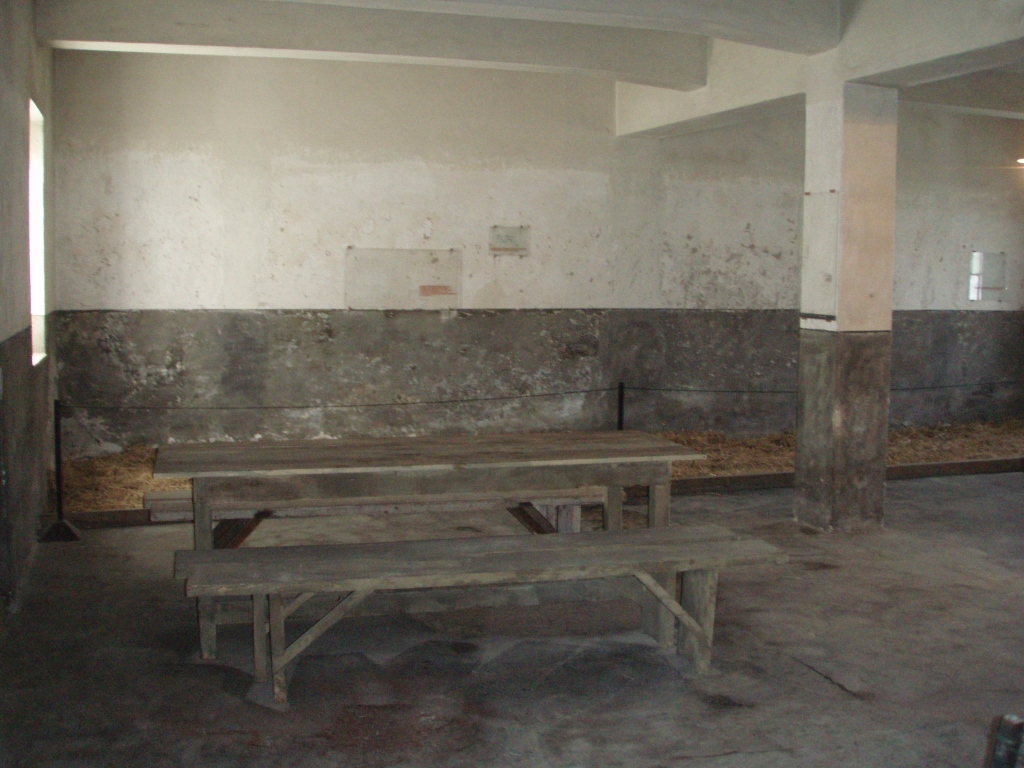 Room for the placement of prisoners
Room for the placement of prisoners
Even more than 60 years after the event, the memory of those hours spent at the camp brought tears to my mom’s eyes.
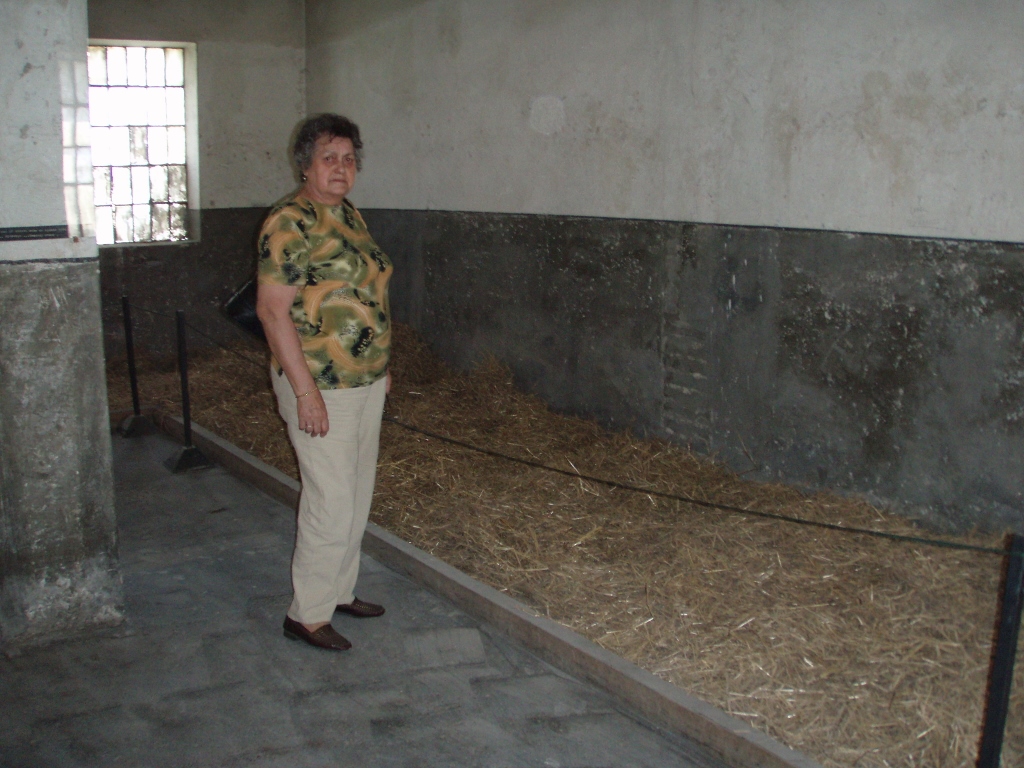 My mom beside the “bed” where she and my aunt were hidden
My mom beside the “bed” where she and my aunt were hidden
My mom also kept mentioning the names of some people who were locally known members of the resistance (we would perhaps call them “urban guerrilla” nowadays) or they had already joined the partisans, but were captured and brought here to the camp where they were put into solitary confinement as they were considered particularly important prisoners. Needless to say, some were also tortured before being sent to the concentration camps in Germany or they were killed. Here it was also possible to visit the section with the cells for single prisoners.
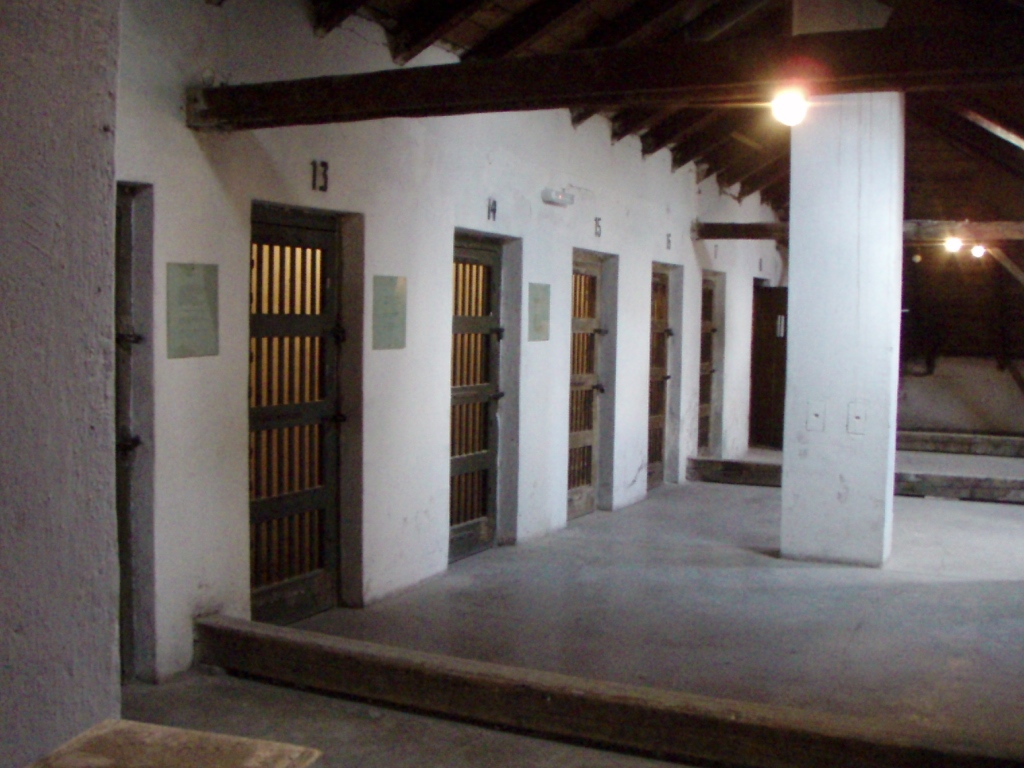 Solitary confinement cells in the concentration camp in Niš
Solitary confinement cells in the concentration camp in Niš
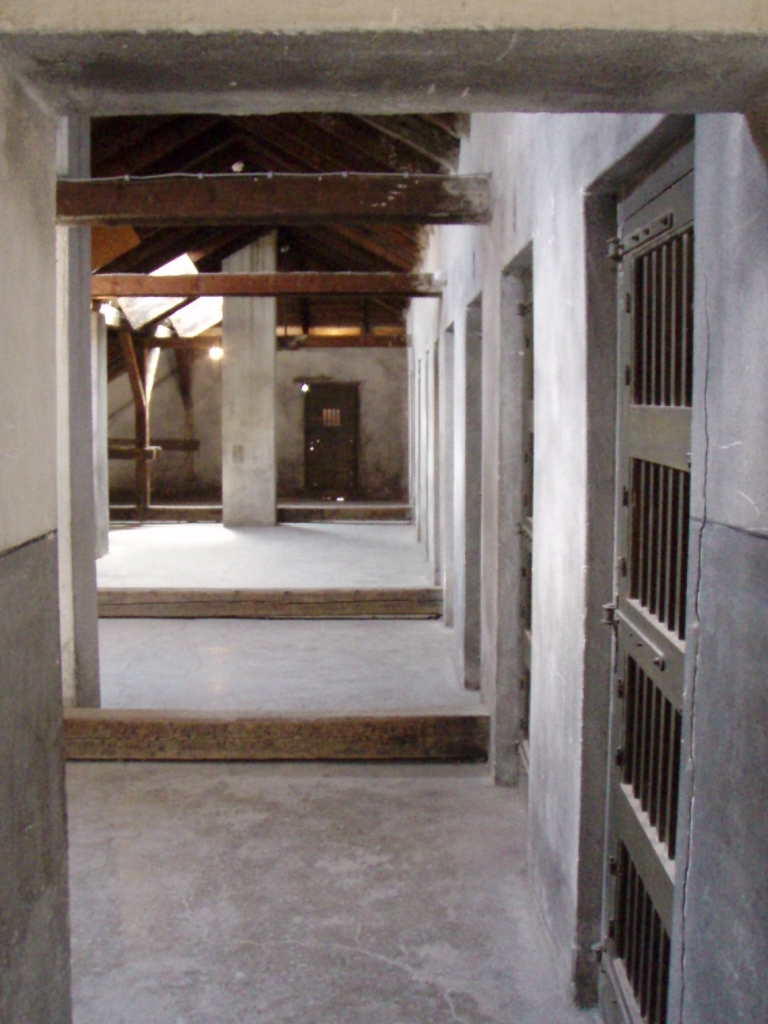 Solitary confinement cells in the concentration camp in Niš
Solitary confinement cells in the concentration camp in Niš
Be as it may, in the end my mom and aunt simply walked out from the camp and then they also went to the police headquarters where they continued with their crying and whining. In the end, my grandmother was released with advice to “leave politics to the others,” while her own sister remained at the camp and was later deported to Germany from where she returned after WWII.
As much as the Second World War, just like any other war after all, was horrible, my mom, my aunt and my grandmother did have some type of luck in all of that, although they certainly did go through serious illnesses, hunger, managing and fighting to survive. I am very sorry that my mom did not write down all of her memories in their entirety, since she always told them very vividly and what I conveyed here was but a short abstract from those memories.
On the other hand, regardless of this story with a “happy end” for my family, the Crveni krst concentration camp was certainly not a “rosy” place at all and I am certain that many other families have very horrific, painful and unhappy memories of this place with a loss of their dearest.
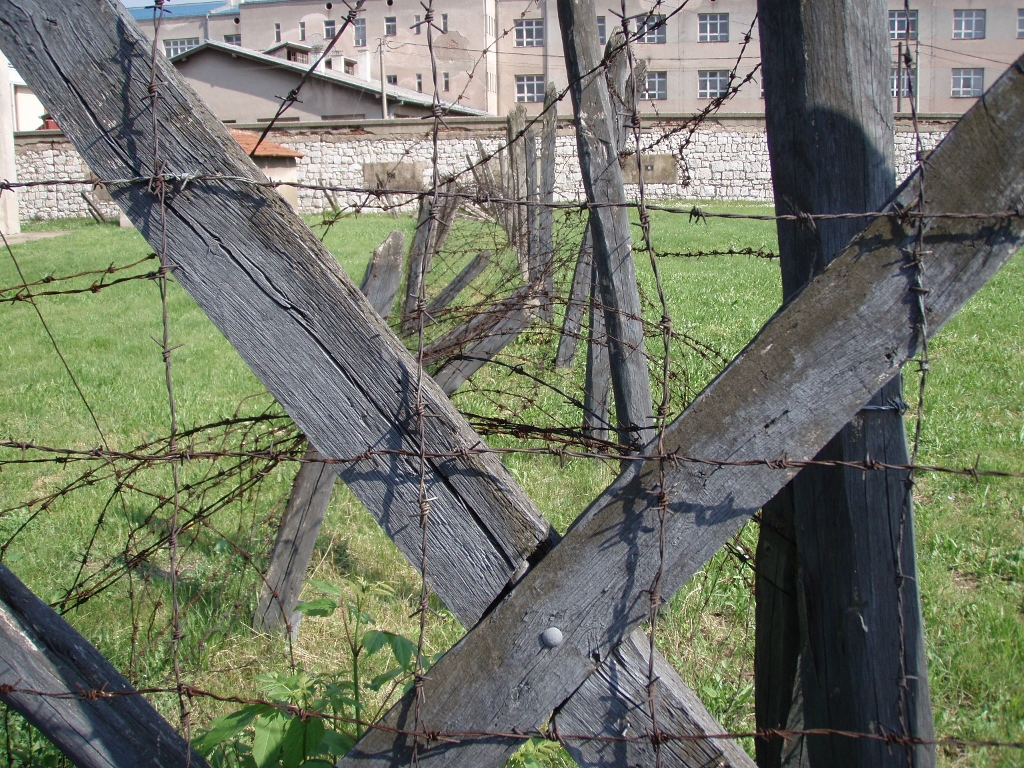 A part of the fence at the concentration camp in Niš
A part of the fence at the concentration camp in Niš
After this visit to the former concentration camp from WWII, we went to yet another very important place in Niš from the beginning of the 19th century. This is the Ćele-kula (Skull Tower).
On 31 May 1809, within the scope of the First Serbian Uprising, one of the most famous battles between the Serbian revolutionaries and the Ottoman Empire forces took place on hill Čegar near Niš. Although significantly more Turks than Serbs were eventually killed in this battle, the Turks did prevail in the end, but only after they managed to take hold of a trench defended by Serbian Vojvoda Stevan Sinđelić. (By the way, today vojvoda means duke, but in the medieval central and eastern parts of Europe this was a term used for a military commander.) So, in order not to fall alive into the hands of the Ottomans, Vojvoda Sinđelić fired his flintlock pistol to a pile of gunpowder kegs, thus blowing up himself, his remaining soldiers, as well as numerous Turks who had already reached the trench.
In order to scare the Serbs lest they rebelled again, Hurshid Pasha, the governor of Rumelia who headed the Ottoman army in this battle, ordered the cut heads of the killed Serbian soldiers to be collected, skinned and then built into a tower that was thus named the Skull Tower. This tower was built beside the main road that led to Istanbul (nowadays a road to Niška banja) and thus it served not only for scaring Serbs, but also all others who passed there. 952 skulls in total were built into the walls of the tower that has an almost square ground plan.
With time, the tower started to deteriorate, many skulls were taken away over the years in order to be buried decently, while some apparently thought the skulls made impressive souvenirs. Anyway, it was only after Niš had been liberated from the Turks in 1878 that the first attempts were made to protect this monument. This went on in several stages and in 1892 a chapel was built around the tower. Today, there are only 58 skulls left in the tower and one of them is considered to be the skull of Vojvoda Stevan Sinđelić himself, thus being exhibited separately.
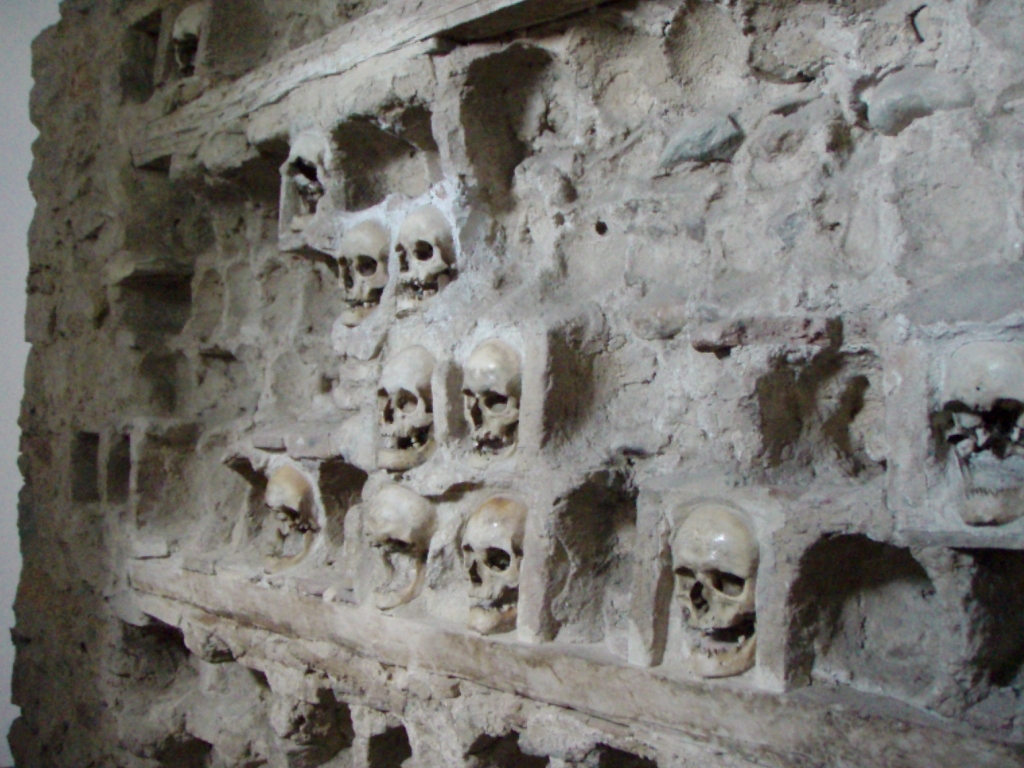 Skull Tower
Skull Tower
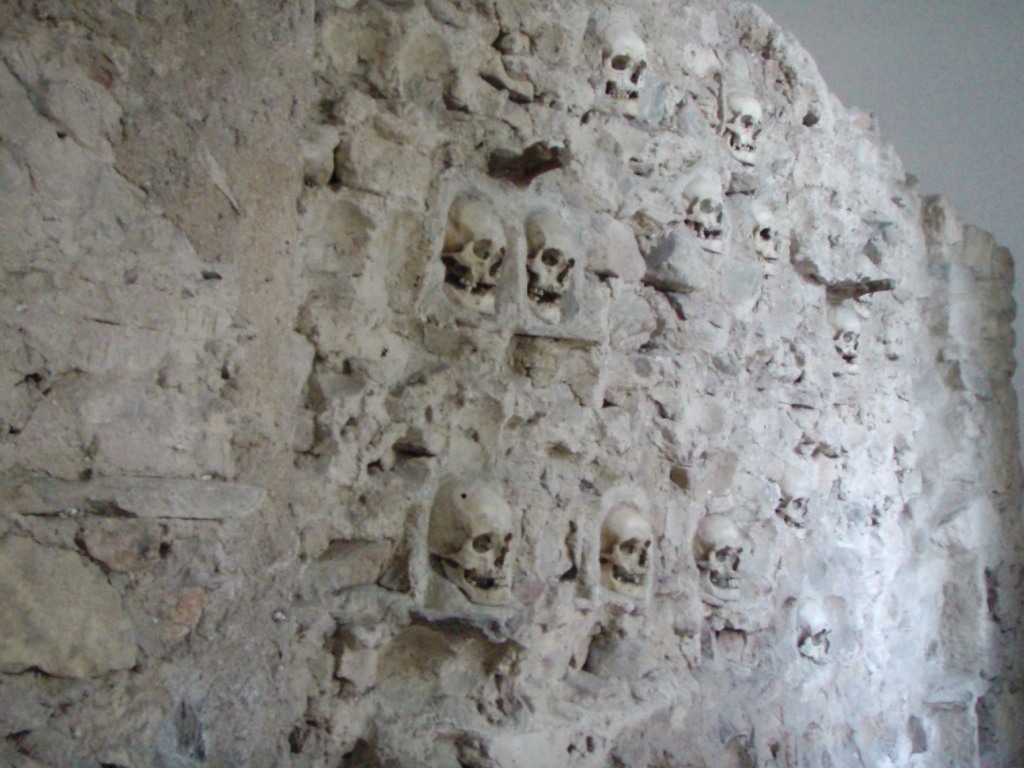 Skull Tower
Skull Tower
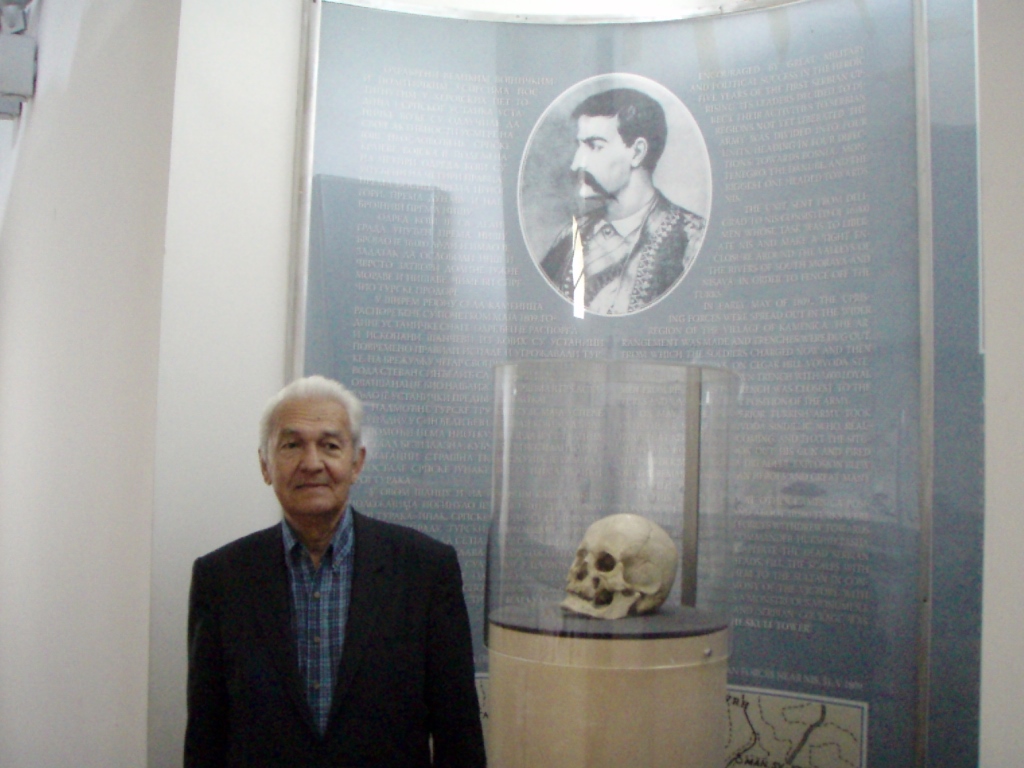 My father beside the skull which is said to be that of Vojvoda Stevan Sinđelić himself
My father beside the skull which is said to be that of Vojvoda Stevan Sinđelić himself
Although there is much more to see and visit in Niš, our day was getting late and thus we headed for Leskovac, a town in the south of the country where we have family. We did have a slight problem finding the right way, but after some wandering around the suburbs of Niš we managed to reach the motorway and thus transfer to Leskovac.
I plan to tell stories about Leskovac and its surroundings some other time, as a type of homage to an important part of my origin, so now I can only report that like always we enjoyed being with our family and also we ate great grilled meat which Leskovac is famous for. And that was not a small thing at all.
After a day spent with the family, my parents and I continued with our short sightseeing trip, visiting a part of Serbia. First we started to return northwards along the motorway, passing by Niš, and then near Paraćin we left the motorway and headed east.
Here, the road practically goes along the west-east direction and while driving there, on the right-hand side, one can see mount Rtanj quite nicely.
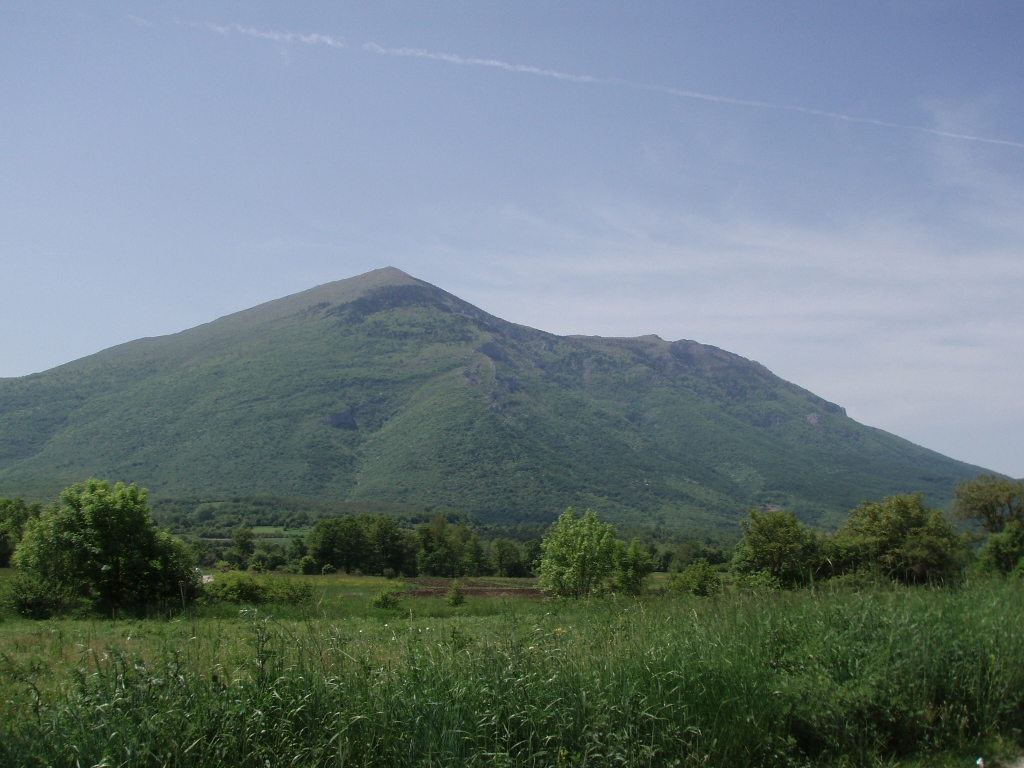 Rtanj
Rtanj
Rtanj is a very special mountain. I think there are more legends linked to this particular mountain than to any other in Serbia. To start with, it is said that a wizard has hidden large treasure inside the mountain, which probably has to do with the fact that Saxons (members of a Germanic tribe) who were very skilful miners came here in the 13th century when mining first started to develop more seriously in Serbia. Also, while I used to come here with hikers, I heard a story that this was the only place in Serbia which Hitler (!) visited (secretly) during WWII (officially, he never thought of coming here) and then there are also stories that there are more ball lightnings here than anywhere else in Serbia or more broadly. In the recent times, in 2012 to be exact, when there was to be an apocalypse linked to the end of the Mayan calendar, Rtanj apparently became an internationally famous place where it was possible to survive the end of the times and thus even many foreigners came to Serbia and specifically to Rtanj for the purpose. They did survive, but so did we who were not on Rtanj at the time.
This is all probably contributed to by the appearance of the mountain itself which to a large extent has a pyramidal shape, as it can be seen in the photo above, and that shape has always, throughout the history, rightfully or not, attracted people who assigned it magical-esoteric-spiritual properties. Thus, for instance, above the Valley of the Kings in Egypt there is a mountain peak that also has a pyramidal shape and it was precisely for this reason that the site of the Valley of the Kings was selected in the first place for the burial of the Egyptian pharaohs. Where there were no natural pyramids, the artificial ones were made (Egypt, Mexico, Guatemala, Greece, Italy, Sudan, ...).
On this occasion, we basically just drove past the mountain, but we still also made a break at an almost unavoidable restaurant/motel at the foot of Rtanj where they have very good gibanica (traditional cheese pie) and fantastic yoghurt. This is not to be missed.
Our first visit of the day was near village Gamzigrad which is a part of the town of Zaječar. In the direct proximity of this settlement there is an archaeological site Felix Romuliana which is inscribed in the UNESCO’s World Heritage List under the name of “Gamzigrad-Romuliana.” These are remains of a palace complex which was built by Emperor Caius Galerius Valerius Maximianus during the late Roman period, i.e., around the end of the 3rd century CE and the beginning of the 4th century CE. The name Felix Romuliana was given to the palace honouring the mother of Emperor Galerius whose name was Romula.
By the way, this emperor left some very important edifices in Thessaloniki, Greece, which I have already written about (https://www.svudapodji.com/en/thessaloniki-3/).
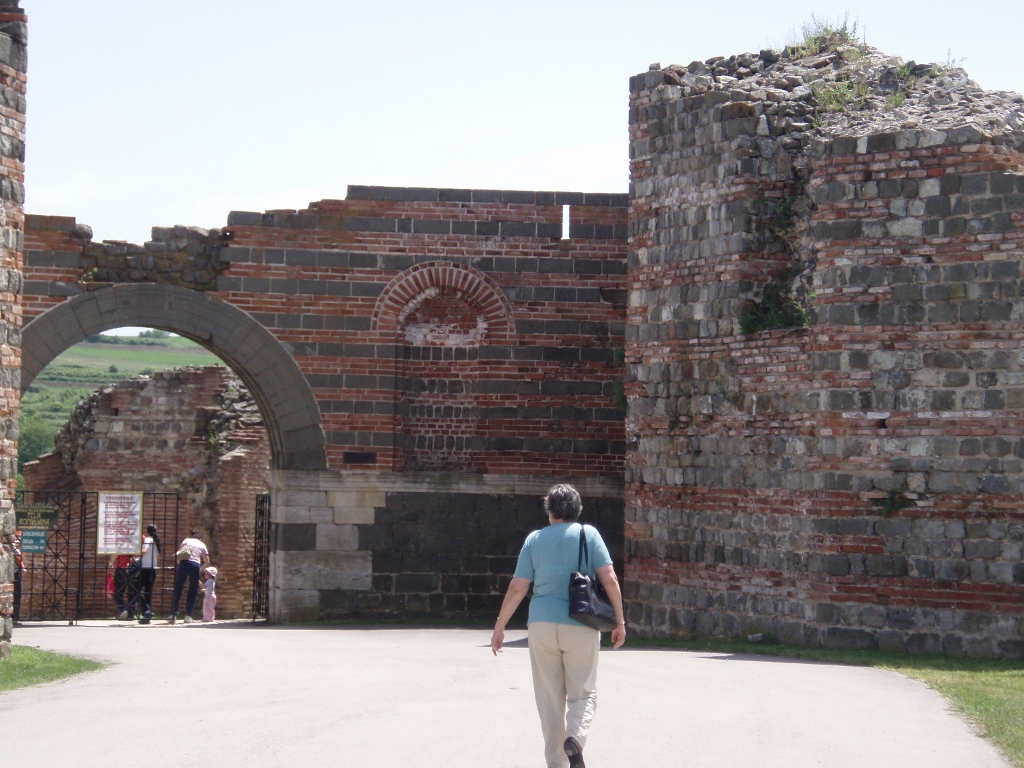 Felix Romuliana – entrance into the palace complex
Felix Romuliana – entrance into the palace complex
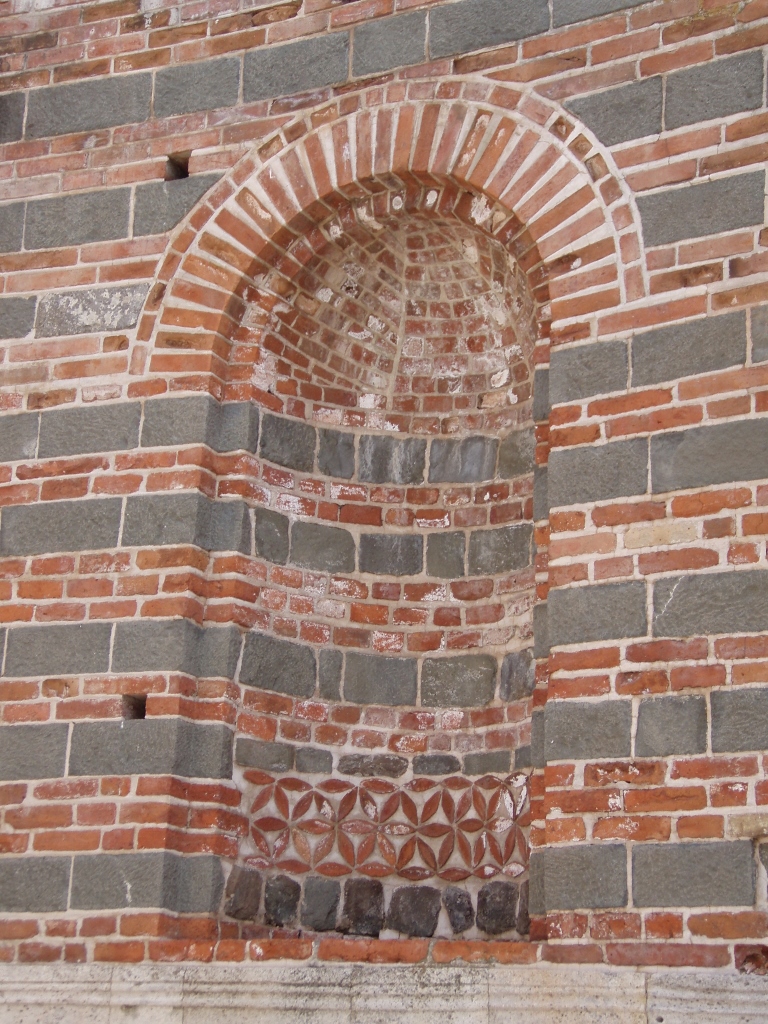 Felix Romuliana – detail from the walls that surround the palace complex
Felix Romuliana – detail from the walls that surround the palace complex
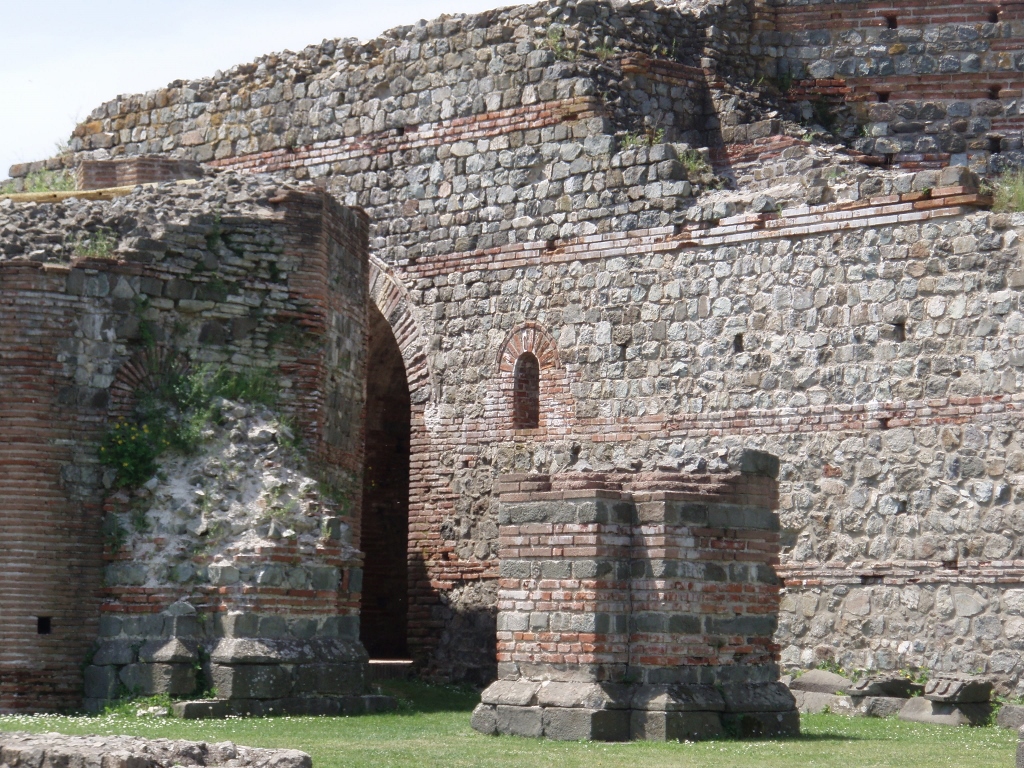 Felix Romuliana – part of the walls that surround the palace complex seen from within
Felix Romuliana – part of the walls that surround the palace complex seen from within
Taking into consideration that before becoming a Roman emperor Galerius used to be a military commander, it is presumed that he transferred his military spirit onto Felix Romuliana since the palace complex is surrounded by massive walls along which there are 20 towers. Within this space, bounded by the walls, there are remains of the palace, basilicas, temples, baths and other structures.
The most impressive are certainly the remains of the palace, since in addition to the walls there is also a preserved atrium with pillars and a fountain, which helps one get a better visualisation as to what it all may have looked like.
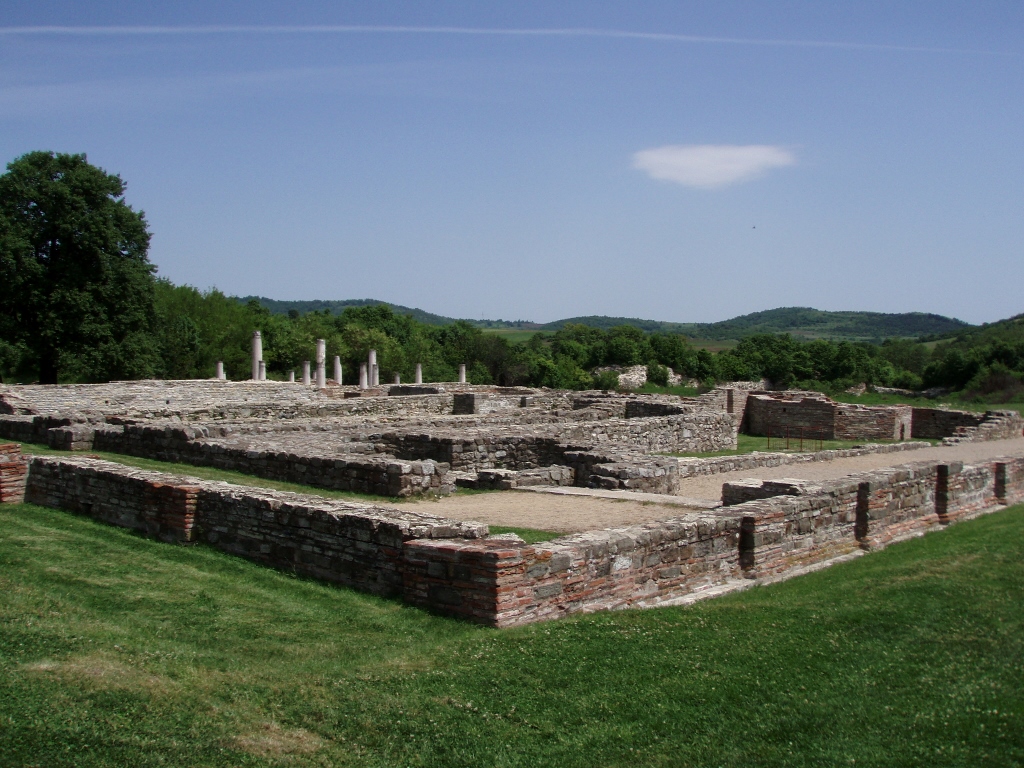 Felix Romuliana – the palace
Felix Romuliana – the palace
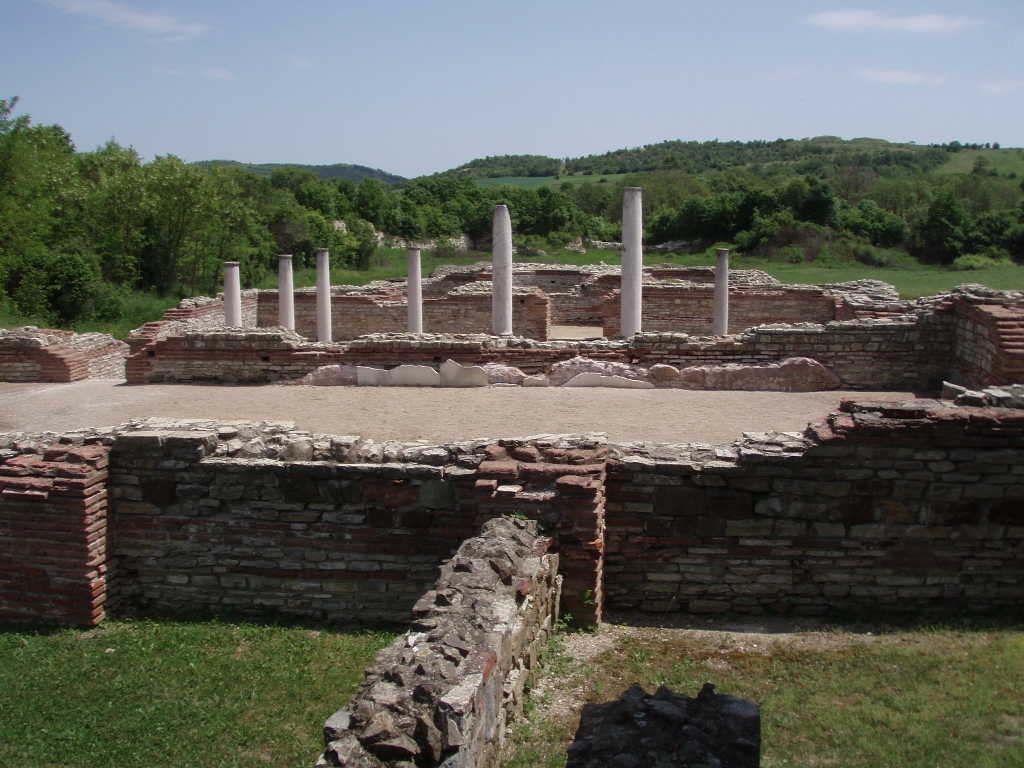 Felix Romuliana – the palace
Felix Romuliana – the palace
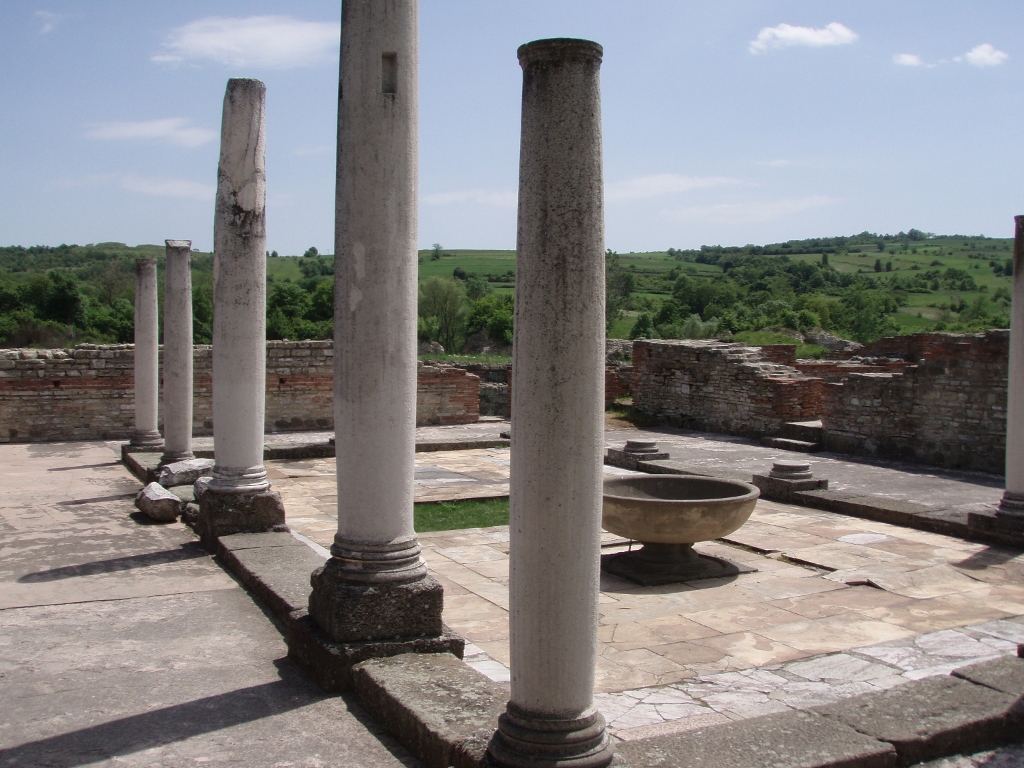 Felix Romuliana – atrium of the palace
Felix Romuliana – atrium of the palace
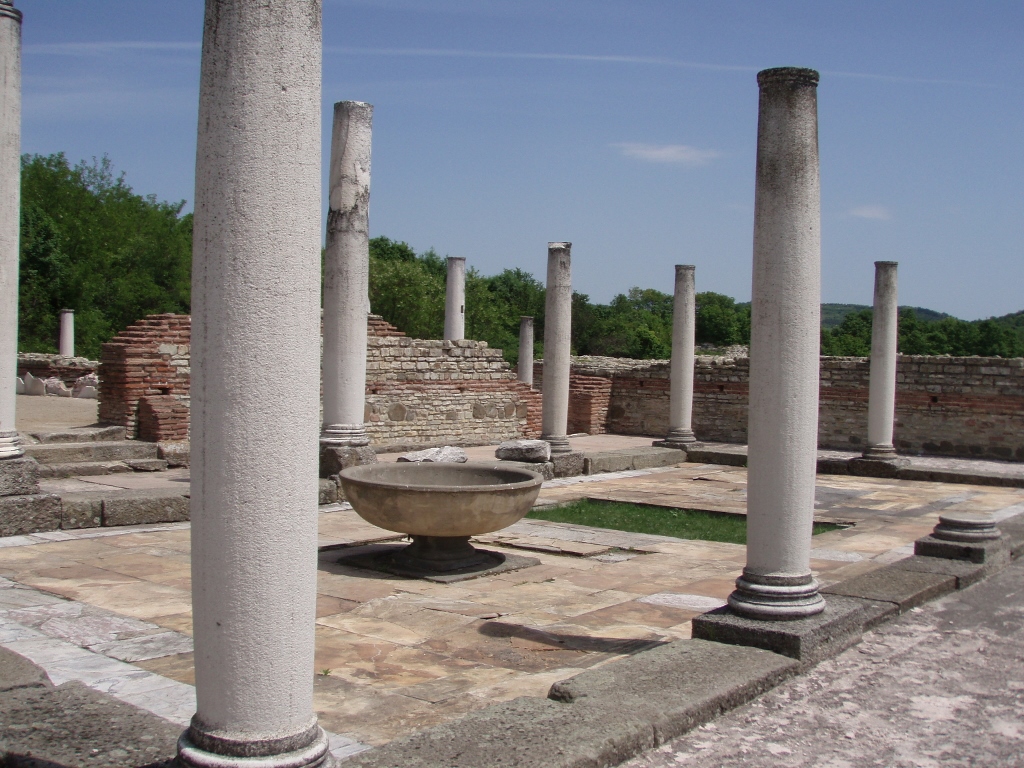 Felix Romuliana – atrium of the palace
Felix Romuliana – atrium of the palace
There are numerous mosaics discovered in Felix Romuliana, but in 2006 we were told that the most important ones had been transferred to the National Museum in Zaječar, so apart from some minor remains, I did not spot anything else more impressive.
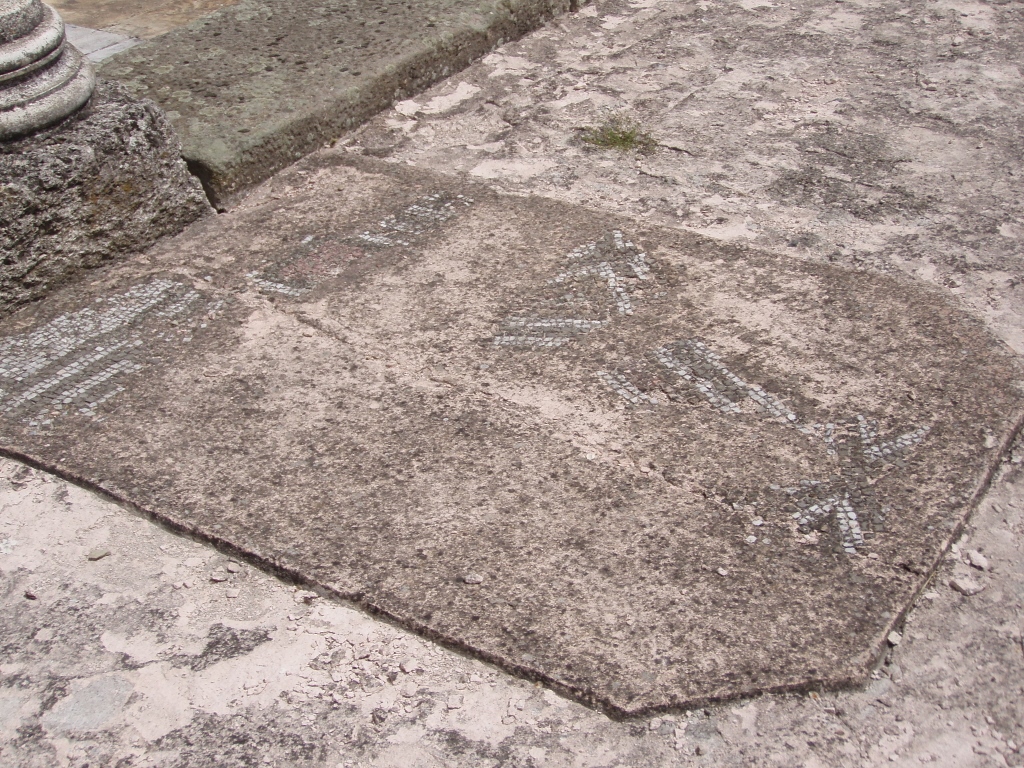 Felix Romuliana – the palace – smaller remains of the mosaics
Felix Romuliana – the palace – smaller remains of the mosaics
The buildings that can be seen at this site have not been reconstructed in order not to disturb their authenticity, so it is possible to see mostly the lower sections of the original buildings.
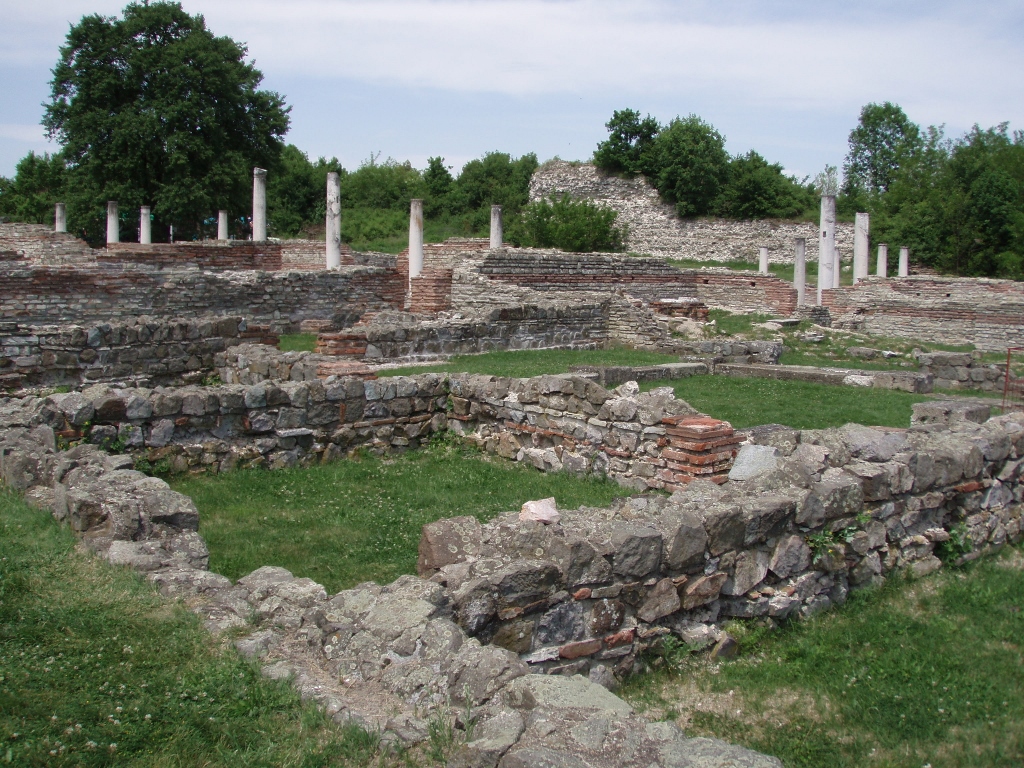 Felix Romuliana – remains of numerous buildings
Felix Romuliana – remains of numerous buildings
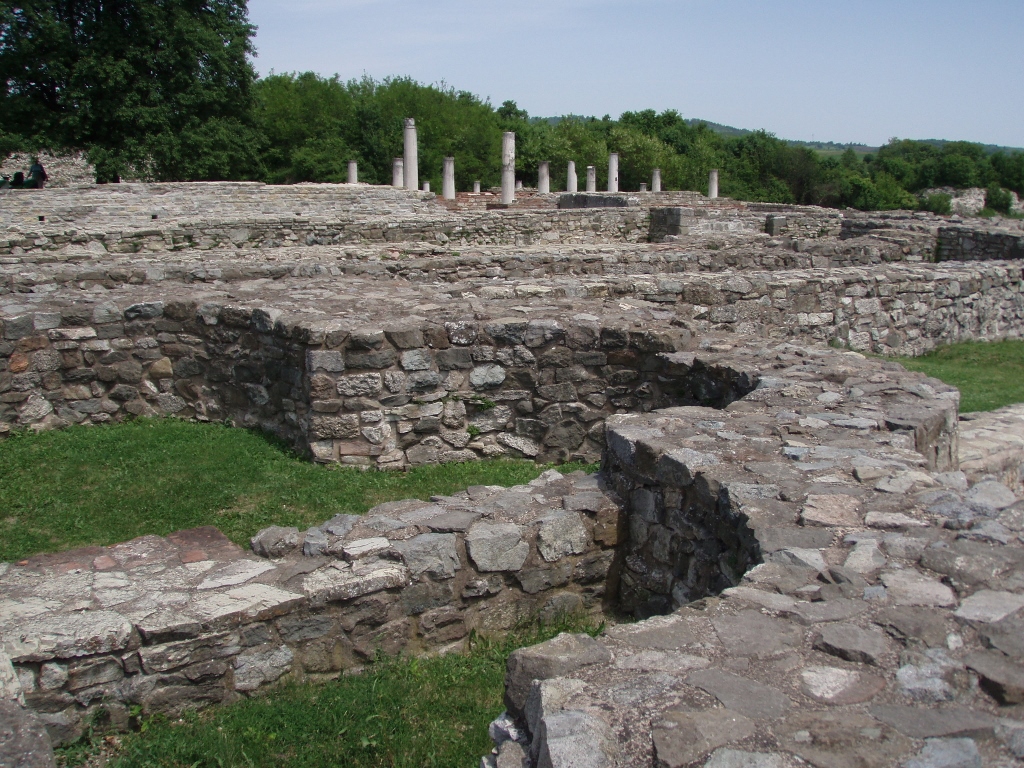 Felix Romuliana – remains of numerous buildings
Felix Romuliana – remains of numerous buildings
Walking around the site I kept admiring the surrounding landscapes that were of deep green colour at the end of May. The day was also perfect – sunny, but not too hot, so it was truly nice walking over the soft grass that grows in-between the archaeological remains. At the time, we were the only visitors walking around the site (there were a few others who were sitting at a cafe) and apart from our occasional comments I could only hear local birds.
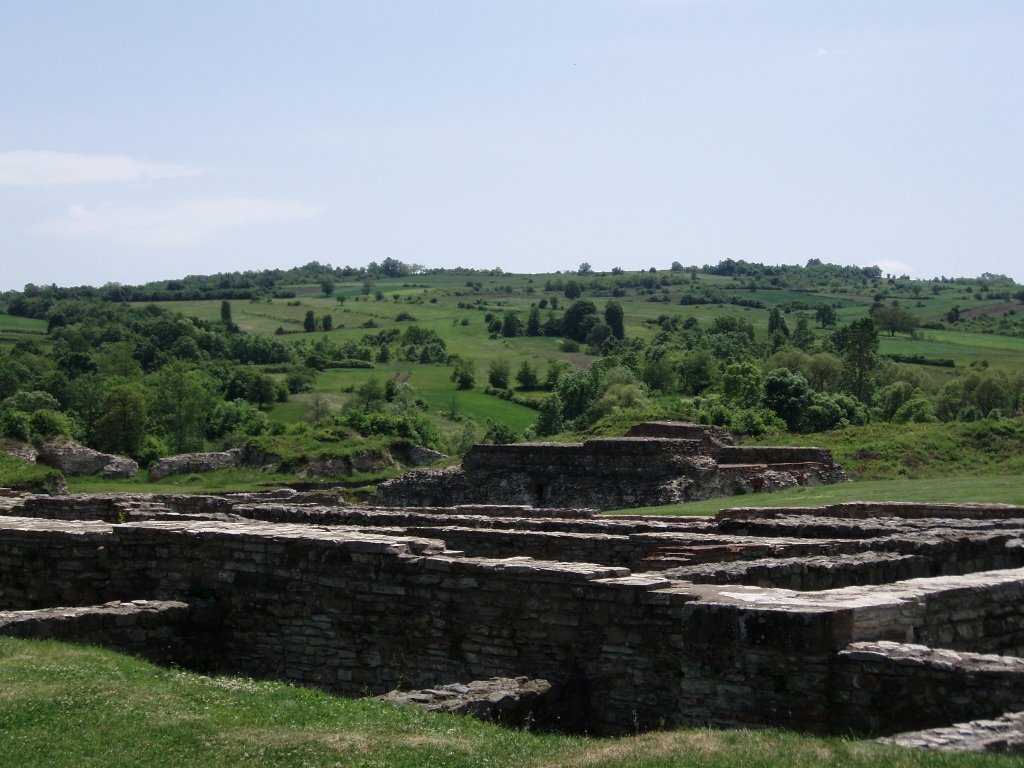 Felix Romuliana – remains of the buildings and the rolling hills that surround the site
Felix Romuliana – remains of the buildings and the rolling hills that surround the site
I must admit that I was left with an impression that this was a rather superficial visit to Gamzigrad, primarily because we did not go to Zaječar and their National Museum, as well as because we did not go to a nearby hill Magura, around 1 km from the main gate of Felix Romuliana. The reason for going to this hill in the first place is that there are two mounds (tumuluses) there which actually represent a memorial complex taking into consideration that Galerius, who died in Sofia, Bulgaria, was buried precisely here, as his mother was. Moreover, they were burned on Magura hill and at the same time there was their apotheosis, i.e., deification, which means that they were declared gods. It is presumed that Galerius was the last Roman emperor to be deified.
After this, our trip took us further through Zaječar (without any stops) and then we drove off towards Negotin and Kladovo.